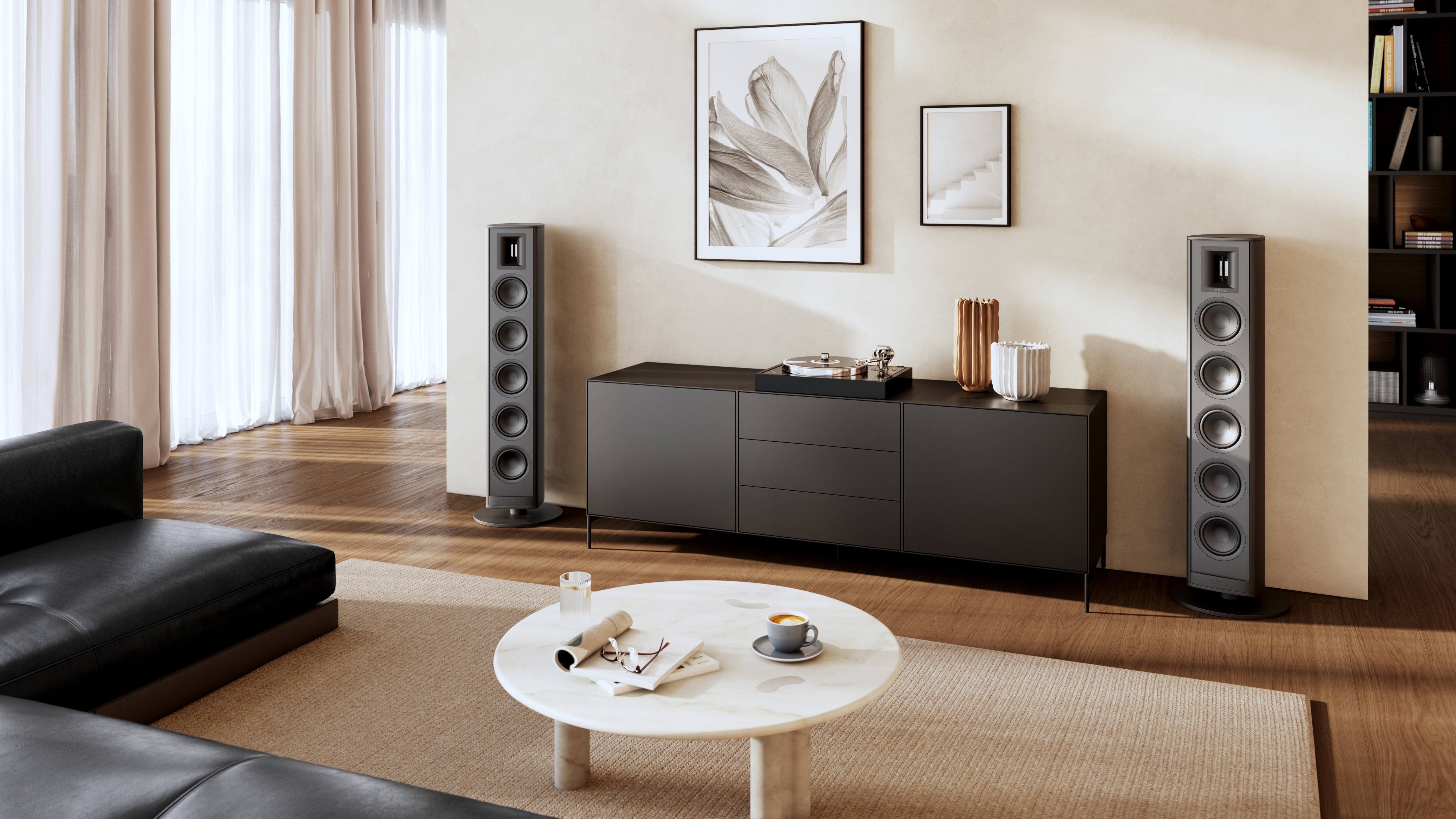What Hi-Fi? Verdict
The compact and versatile MR1 Mk3 are powerful, robust-sounding speakers that are a great fit for small spaces, and work particularly well with turntables
Pros
- +
Powerful, punchy and dynamic sound
- +
Excellent rhythmic drive and stereo imaging
- +
Good quality built-in phono stage
- +
Stylish, compact design
- +
Easy to use
Cons
- -
We'd like greater subtlety at low frequencies
Why you can trust What Hi-Fi?
We have been big fans of Ruark Audio’s charming MR1 Mk2 powered Bluetooth speakers ever since we reviewed them back in 2017, bestowing them with a glowing five-star review and seven consecutive best desktop speaker wins at the What Hi-Fi? Awards.
A sequel has been a long time coming, with Ruark no doubt finding it tricky to improve on such a winning combination of petite size, musical sound and affordable price without changing things drastically.
The new Ruark MR1 Mk3 speakers are finally here, and the British audio brand has evolved the design, added new audio inputs and upgraded the sound with a bigger driver and new amplification technology – all without increasing the price or footprint by too much.
It’s an impressive set of changes, but do the third-generation MR1 speakers still win us over?
Build & design
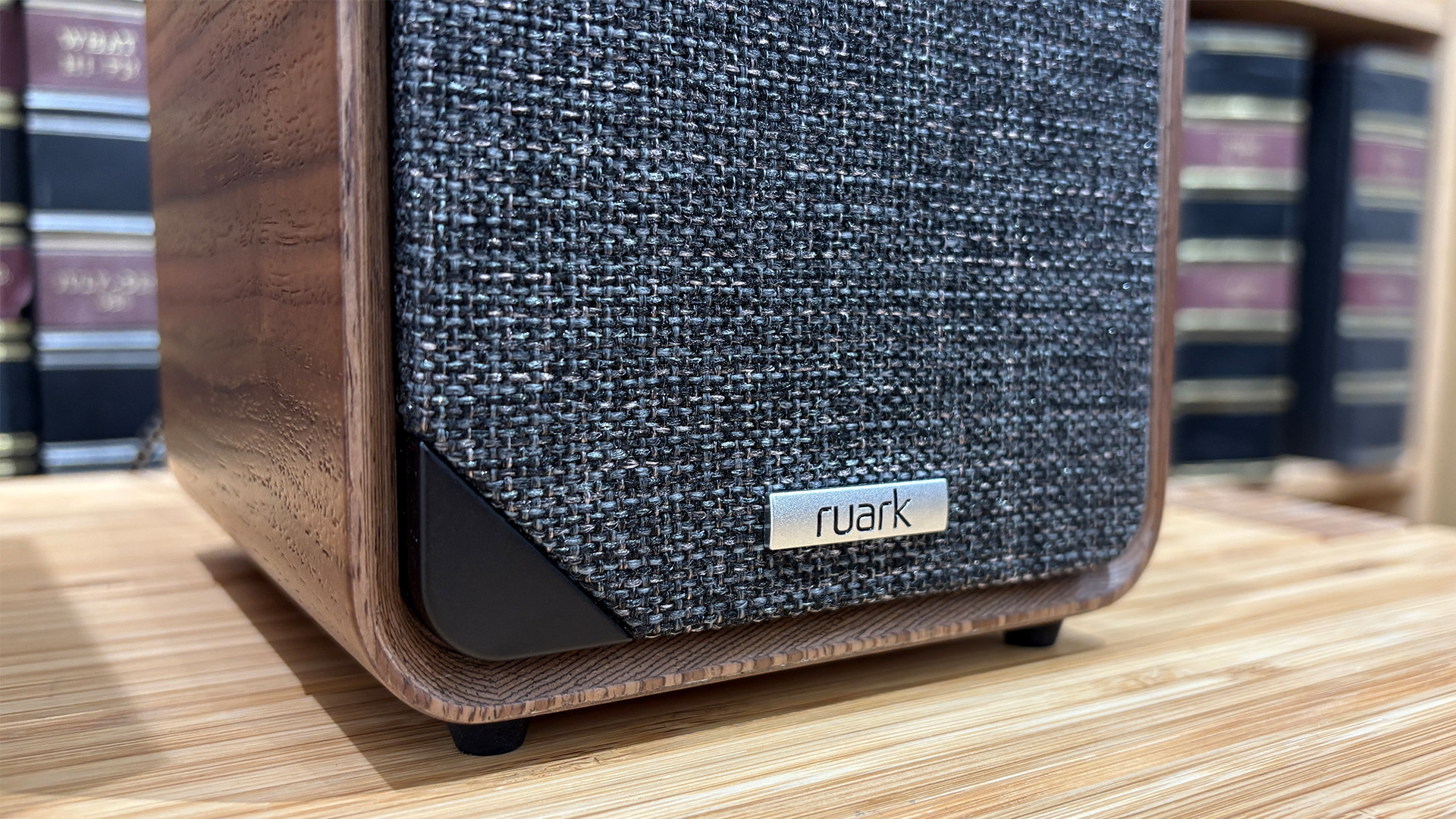
The MR1 speakers have always been a compelling proposition because of their compact, genuinely desktop-fitting size and charming looks.
Ruark has cleverly made the new generation speaker’s cabinet size a tad bigger and fitted a larger mid/bass driver, while still retaining that compact footprint that fits so neatly on either side of a laptop.
The MR1 Mk3’s cabinet is roughly 3cm deeper and a couple of centimetres taller and so has a bigger internal volume; the MR1 Mk2 look rather petite next to them, but the MR1 Mk3 remain much smaller than any of its desktop speaker rivals.
The latest hi-fi, home cinema and tech news, reviews, buying advice and deals, direct to your inbox.
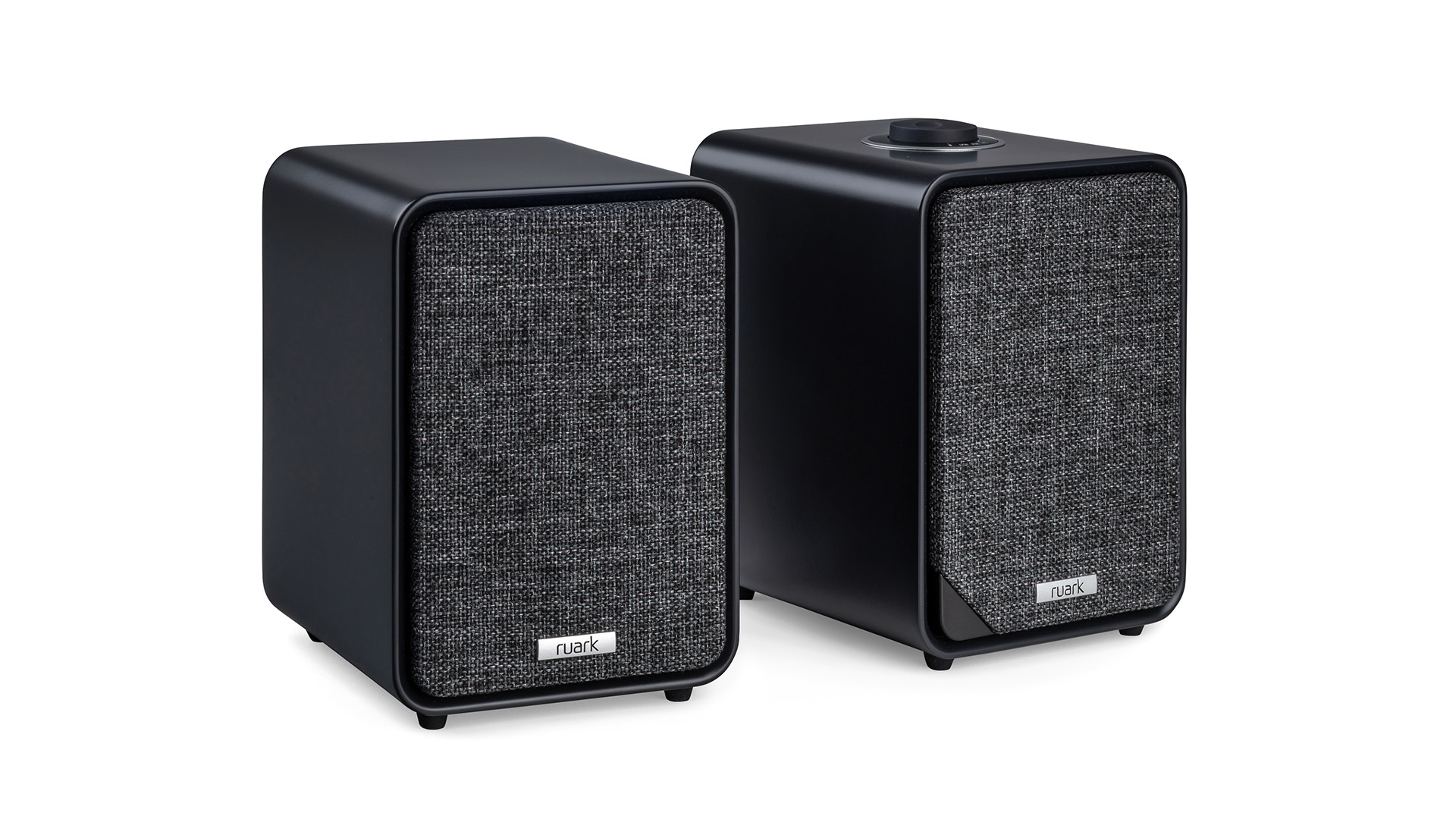
Bluetooth? Yes (aptX HD)
Inputs MM Phono, USB-C, Optical/3.5mm aux
Outputs Subwoofer
Dimensions (hwd) 18.5 x 13.5 x 16.5cm (20.2cm height with RotoDial)
Weight 2.2kg (each)
Finishes x 2 (rich walnut veneer, charcoal lacquer)
Ruark has also taken the chance to refine the already attractive design even further. The rich walnut veneer of our review sample is now a seamless wrap around the cabinet with no discernible break in the grain, whereas it was composed of separate panels in the Mk2 model. The woven fabric grille is a darker slate colour too. The rich walnut finish is lovely; an alternative charcoal lacquer option is also available.
The build quality is excellent and exudes subtle luxury. The customary RotoDial controller on top is well-made, instinctive to use and responsive when changing inputs and adjusting volume, while the slim, plastic remote for basic controls is also unchanged from before – both work well in daily use.
The biggest changes are all inside. Alongside the returning 20mm silk dome tweeter, the MR1 Mk3 now has a bigger 8.5cm mid/bass driver – up from the Mk2’s 7.5cm – and is composed of a treated natural fibre cone. Accordingly, the crossover and the downward-firing bass reflex port have been optimised and re-tuned, with Ruark promising a "significant leap in acoustic performance”.

The two-way speakers are powered by 25W of Class D amplification – a considerable shift from the Class A/B amplification at the heart of the two previous generations of the MR1 speakers. Ruark says it was seeking a sizeable increase in power and control in the third-gen model, and so it has adapted the Class D amplification and circuitry that has served the current five-star R410 all-in-one system and R610 streaming amplifier well.
The powered speakers follow the same configuration as before, with one master speaker housing the amplification, DAC, inputs and RotoDial controller, with a wired cable connection to the second speaker.
A thicker, woven fabric interconnect cable of 3m length is included, and it is supremely easy to get the speakers started and playing music. It’s an accessible system for all music fans, with the input labels and LEDs for each source clearly defined.
Note that the LEDs for each input are now all the same white colour, instead of different colours in the previous two models (blue, green and orange denoting each source) – but we find it doesn’t change our experience of using the new speakers.
Features

The MR1 Mk3 are predominantly a set of Bluetooth stereo speakers, but it now features two additional audio inputs: USB-C, and a pair of RCA phono inputs for plugging in a turntable directly.
We said in our MR1 Mk2 review that we’d love to have a USB input in the next iteration, and Ruark has duly obliged with a USB-C input that neatly connects to most modern laptops and smartphones. The internal DAC can handle up to 24-bit/192kHz hi-res files, although the USB-C input’s limit is 96kHz.
We find it works seamlessly when connected to our MacBook Pro, with YouTube videos and Zoom calls coming through with clarity, solidity and no discernible lag.
The built-in moving magnet phono stage is a welcome addition here. In the past few years, we have seen the older Ruark MR1 Mk2 paired up with phono stage-equipped turntables in stores and various home setups as vinyl’s popularity keeps growing, so the integration of a phono preamp makes perfect sense here.
It allows you to plug in any turntable to create a neat and tidy vinyl system without the need for multiple separate boxes. It’s ideal for those with limited space.
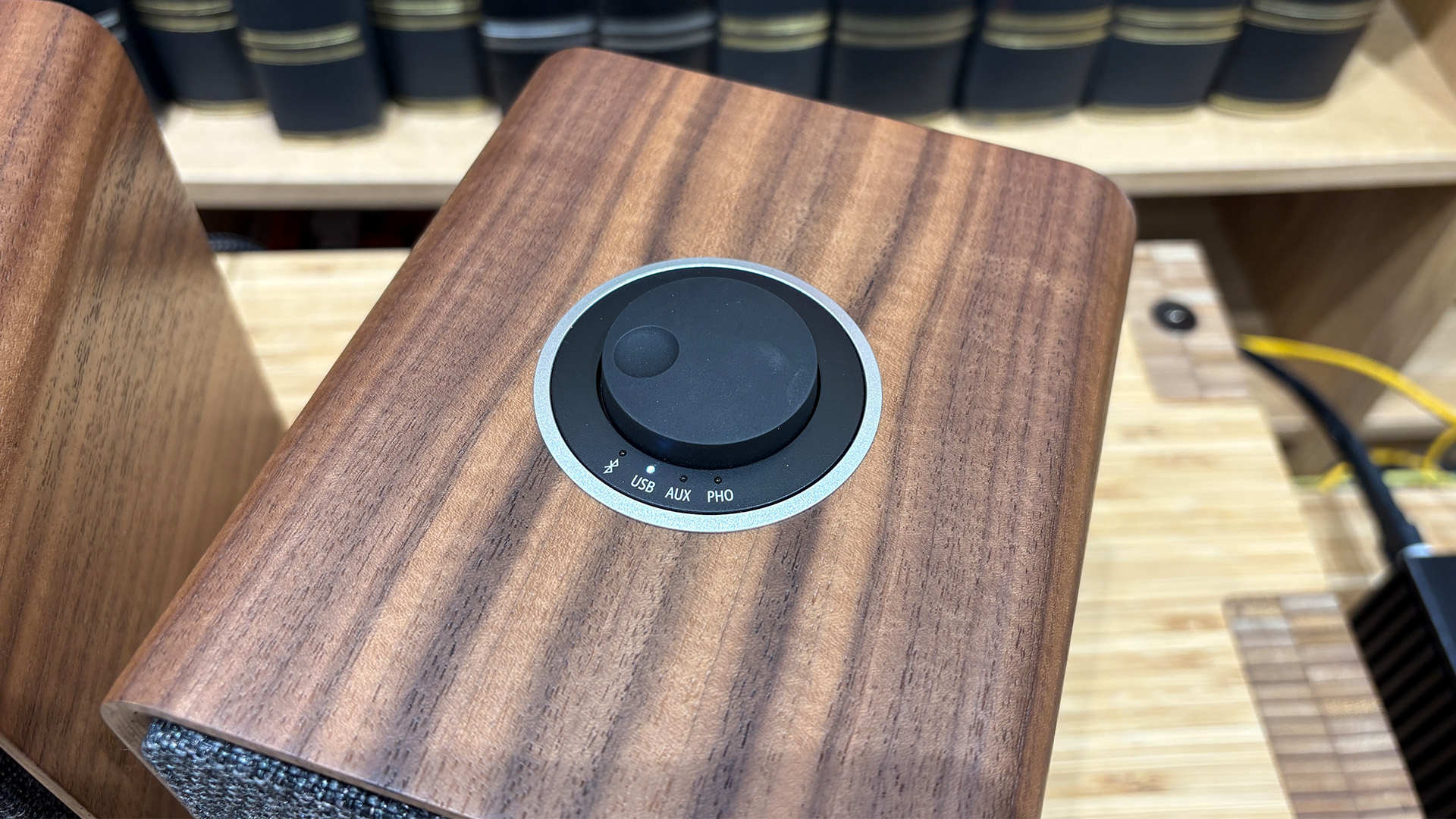
The physical connections are rounded off with a combined optical and 3.5mm aux input, with an adapter included for when you need to connect an optical/toslink cable, and a subwoofer output.
In terms of Bluetooth, the MR1 Mk3 supports the standard AAC and SBC codecs, as well as the higher-quality aptX HD codec for playing 24-bit streams from compatible sources. As before, the speakers instantly go into Bluetooth pairing mode when turned on and remember the most recently connected source, making playback from your favourite music app a breeze.
Altogether, this is a significant step up in features set for the price, and the upgraded connectivity means you can connect all kinds of sources – TV, laptop, smartphone, MP3 player, turntable, CD player – to these versatile little desktop speakers.
Sound
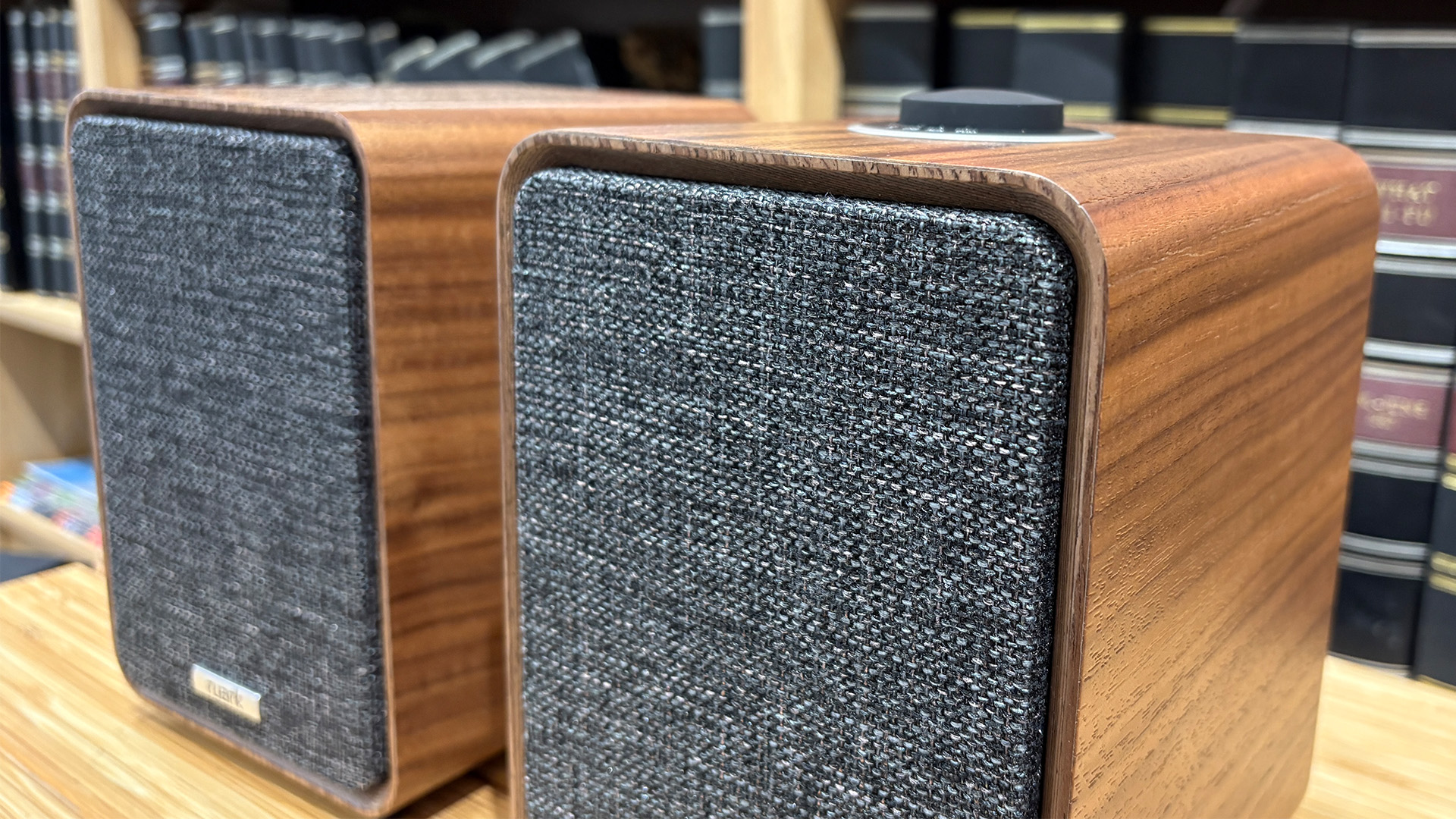
Another key part of the MR1 desktop speakers’ success? Their entertaining sound performance. The new MR1 Mk3 impress us straight out of the gate with a more powerful, muscular and bigger sound, dwarfing the smaller-scaled MR1 Mk2’s delivery.
The speakers are brimming with power, resulting in more emphatic and impactful basslines and greater large-scale dynamism.
The speakers’ rhythmic drive remains excellent for such compact speakers. They are full of propulsive momentum, grabbing us by the lapels with Eminem’s fierce delivery in Forget About Dre and delivering tracks from Dua Lipa, Billie Eilish and Macklemore with oodles of energy.
Turn up the volume higher, and we are surprised by how well the MR1 Mk3 keep their newfound power and composure. We find these speakers rather enjoy being played at party levels, although you will find that the table they are placed on will start to shake a fair bit at higher volumes.
The MR1 Mk3 deliver a considerably deeper and meatier low-end performance. The gravelly tones of Bon Iver’s voice in Exile sound more textured and fuller with extended growls, while Taylor Swift’s voice has weightier, layered textures that are allowed to luxuriate in the more spacious sound field.
The soundstaging from these speakers is impressive: The Unthanks’ delicate, intimate vocals in Here’s The Tender Coming hang beautifully in the centre, sounding wonderfully solid, fleshed out and grounded.

The gentler, acoustic harmonies of That’s All She Wrote by Folk Bitch Trio prove that the Ruark speaker can slow down and be more contemplative where the songs require it, too – rhythmically, they remain top-notch.
Dynamically, the ratcheting up of tension in Hans Zimmer’s Why So Serious from The Dark Knight soundtrack is deftly done, with variations in the tone coming through clearly and keeping our attention rapt. The metronomic ticking is delivered with snappy precision and decent weight, and there is a greater sense of physically with the punctuating sound effects.
The increase in power and punch means that Ruark has traded off a little of that midrange sweetness and subtlety that we loved so much in the leaner and nimbler MR1 Mk2, and there are times when we feel that the bass could be more tuneful.
Orchestral tracks such as John Williams’ Theme From Jurassic Park show how well the MR1 Mk3’s commanding tone can be kept in check, however, with the strings given ample space to soar high and wide.

A comparison with their closest rival at this price, the Award-winning Elac Debut ConneX DCB41, proves interesting, as both speakers offer quite different sonic presentations.
The Elac are more reserved and have a more even-handed balance compared with the Ruark’s livelier, punchier and bassier delivery. We find the Elacs are a little subtler with voices and more tuneful in the bass, while the Ruarks are more rhythmically capable.
The differences are clearer when using the Ruark’s built-in phono stage, which is very good indeed. With a Rega Planar 3 RS Edition plugged in, records sound clear, well-defined, and confident. Nirvana’s MTV Unplugged set comes through with plenty of punch and dynamism, and ample space between the guitars and bass, while Kurt Cobain’s voice is full of deeper, gritty detail.
It’s a stark contrast to the Elac’s less clear and dynamically stunted phono stage, and the MR1 Mk3 prove to be one of the better examples of an integrated phono stage in powered speakers we’ve heard.
The MR1 MK3’s sonic character remains the same when using a USB-C connection to a MacBook laptop and iPhone 16, while an optical wired connection to a Cyrus CDi player also proves stable. The wired connections are clearer and more composed than Bluetooth, but the Ruarks’ vivacious energy remains intact in all cases.
Verdict
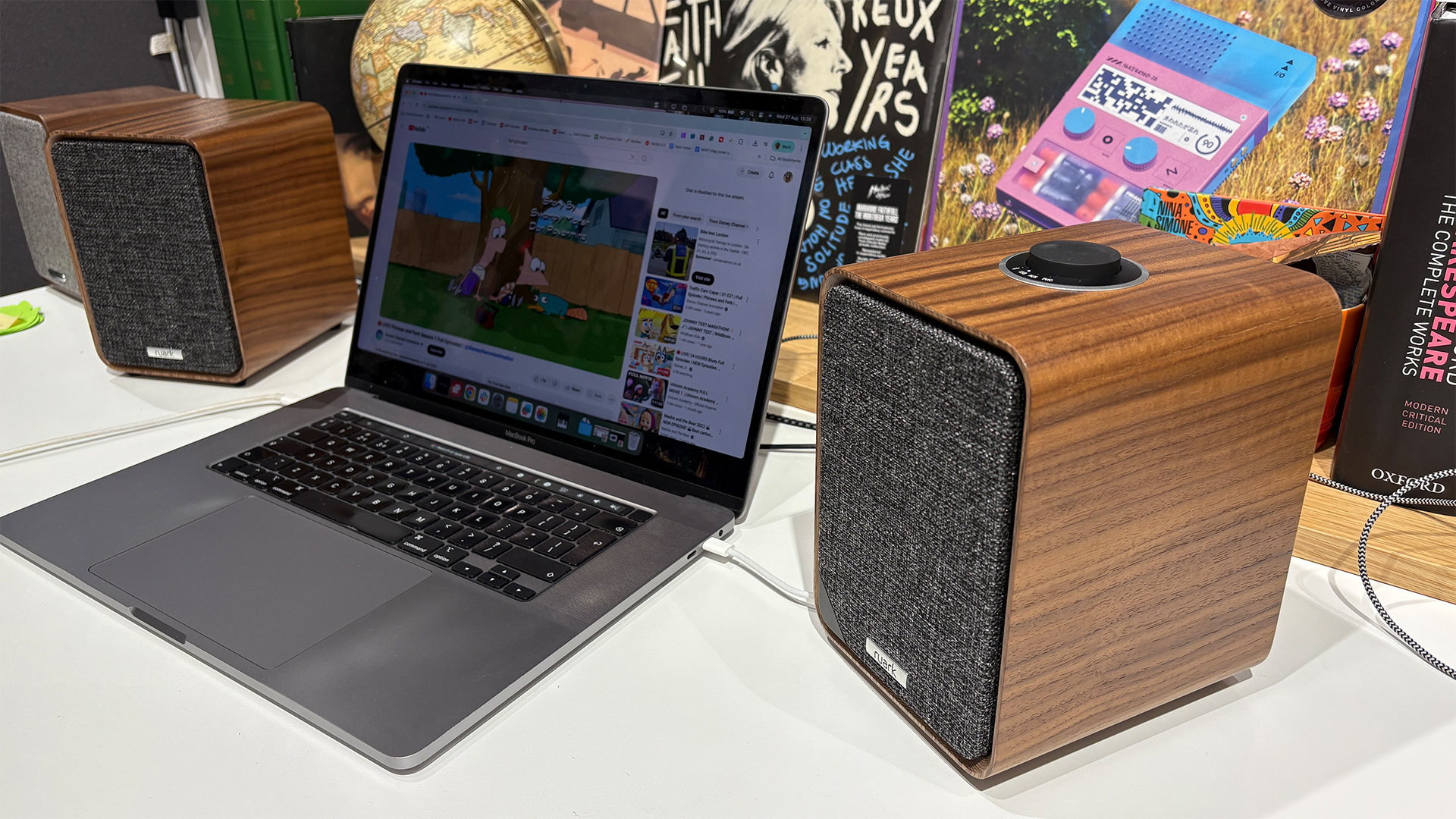
The fact that Ruark has been able to fit in so many upgrades and new inputs into the MR1 Mk3 without changing its compact, desktop form and increasing the price too much is impressive. The powerful, punchier and bigger sound evolves the concept further, although we'd like just a touch more finesse in the bass.
Their user-friendly design and lively presentation make them an appealing pair of powered speakers, and that talented built-in phono stage makes them well-suited to creating a neat and tidy turntable system.
Review published: 29th August 2025
SCORES
- Sound 5
- Build 5
- Features 5
MORE:
Read our review of the Elac Debut ConneX DCB41
Also consider the step-up KEF LSX II LT
Our guide to the best desktop speakers in a variety of sizes and prices

Kashfia is the Hi-Fi and Audio Editor of What Hi-Fi? and first joined the brand 13 years ago. During her time in the consumer tech industry, she has reviewed hundreds of products (including speakers, amplifiers, turntables and headphones), been to countless trade shows across the world and fallen in love with hi-fi kit much bigger than her. In her spare time, Kash can be found tending to an ever-growing houseplant collection and shooing her cat Jolene away from spinning records.
- Harry McKerrellSenior staff writer
- Andy Madden
You must confirm your public display name before commenting
Please logout and then login again, you will then be prompted to enter your display name.


